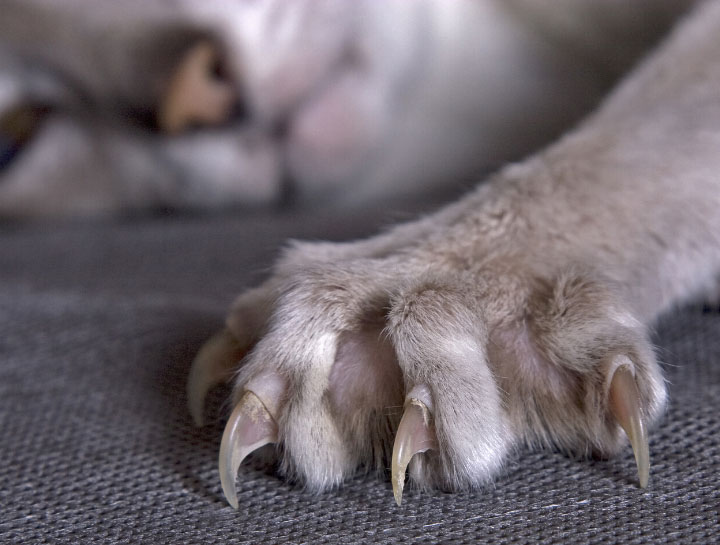Cat Declawing
Make an informed decision about declawing your cat.
We recommend providing cats with plenty of scratching materials (posts, etc.) and keeping their nails trimmed on a routine basis to minimize any damage to home and furniture, as well as to people and other pets. The Indoor Pet Initiative has great information on helping your cat with their natural scratching tendencies.
We understand that there are times when families have to consider a front paw declaw (onychectomy) in order to protect their home and themselves when the scratching tendencies become destructive. At the Animals' Hospital of Levittown, we offer a comprehensive and balanced approach to help decrease the pain and trauma associated with the declaw procedure.
Declaw Laser Surgery
We use a CO2 Laser for the surgical declaw. Compared to other methods of declawing, the CO2 Laser decreases bleeding, pain sensation, tissue trauma and promotes faster healing. There are no laser incisions into bone for the procedure. The laser incisions are made over the ligament attachments of the small, retractable part of the digit. This also helps significantly to minimize any pain or trauma postoperatively. We have also found that the laser incisions are much smaller than incisions made with scalpel blades or other instruments.
Pain Control and Anesthetic Protocol
As part of our typical anesthetic protocol, we incorporate anesthetic drugs that help with pain sensation before the procedure begins. We perform a "ring block" where numbing agents are administered over the nerves associated with the declaw surgery providing additional pain control. After the procedure, feline patients are given anti-inflammatory and narcotic pain medications.
Postoperative Care
We bandage the paws after the procedure to help rest and protect them. We will keep your cat in our hospital for two nights as well. This helps with the initial healing phase from the declaw surgery and allows your cat to rest its paws before going home.
At-Home Care
We recommend using Yesterday's News cat litter or shredded newspaper for 10-14 days. We know it can be very difficult to "rest" a cat at home, but we recommend trying to limit your pet's activity as best you can over the 10-14 days. Thanks to the great care they receive with this procedure, most cats go back to normal activity very quickly.
From the American Veterinary Medical Association (AVMA):
An AVMA literature review on feline declaw procedures found that many owners choose to have their cats declawed to protect their furniture or other household possessions. Scratching is a normal behavior of cats, but destructive scratching represents approximately 15-42% of feline behavior complaints. The act of scratching serves many purposes — it conditions the claws by removing aged cuticle, serves as a visual and scent territorial marker, provides defense from attack, and stretches the muscles of the limbs, thorax, and back. After declawing, cats continue to show the same frequency of scratching behavior.
Surveys of cat owners who declawed their cat report a perceived increase in the quality of the owner-cat relationship as a result. Declawing may also be performed to protect people, particularly those who are geriatric, diabetic or have compromised immune systems and so may suffer life-threatening complications from cat scratches — declawing decreases this risk while allowing the cat to remain in the home.
The AVMA also recommends that declawed cats should be housed indoors and allowed outside only under direct supervision. The AVMA notes that there is no scientific evidence that declawing leads to behavioral abnormalities when the behavior of declawed cats is compared with that of cats in control groups.
For more information, please read the AVMA article, Declawing of Domestic Cats.

